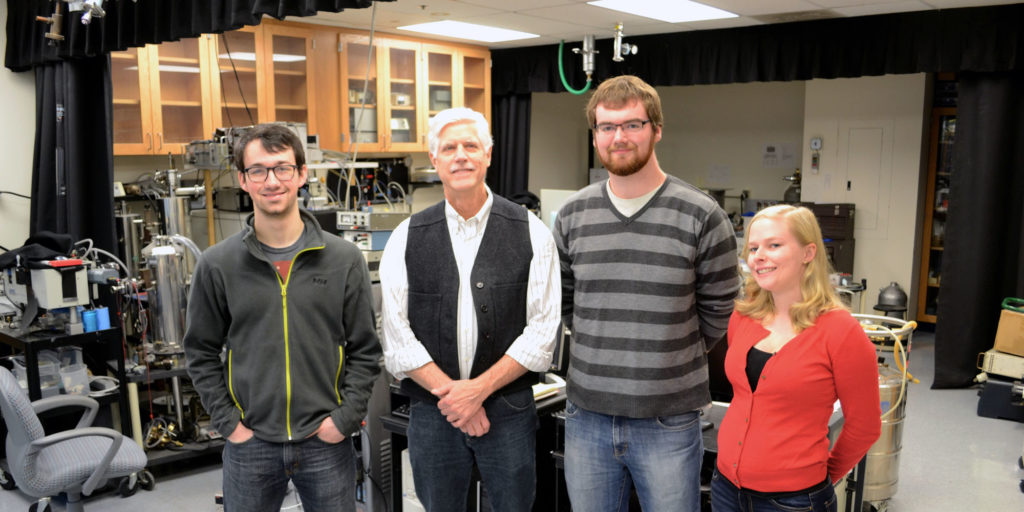If you hold your laptop or cell phone after it’s been used for a while, you’ll notice that it’s warm, or even hot. And where there’s heat, there’s wasted energy.
Northeastern University physicist Prof. Don Heiman and researchers from MIT, Stanford, and Penn State have developed a material that could possibly lead to greener electronics. Their research was recently published in the journal Nature Materials. Graduate students Badih Assaf and Michelle Jamer at Northeastern University, and Cui-zu Chang and Jagadeesh Moodera at MIT also worked on this project.
It all starts with topological insulators. This is a unique material that transmits electronic conduction on its surface. In normal materials, the electrons bounce around, and as they move along, they collide with defects and bounce backward. This extra movement or resistance generates more heat, leading to more wasted energy. However, the electrons in these topological insulators don’t bounce around as much and thus have lower resistance. “Resistance in anything that conducts electricity generates heat,” said Heiman. “If you can lower the resistance, you can cut down on the wasted heat.”
Traditionally, to reduce the resistance of the topological insulator, a large magnet is held over the material. The magnetic field from the magnet causes the electrons to move to the outer edges of the surface and forces them to move only in one direction, as if they were on a one-way street. Now, since there is no traffic lane for electrons to go in the opposite direction, they speed along with much less resistance.
This is where vanadium atoms come into play. For some time, it was believed that vanadium atoms did not possess magnetic properties, but when a topological insulator is doped with vanadium atoms, these atoms spontaneously magnetize.
Why is this important? The magnetic properties created by the vanadium have removed the need for a large, external magnet. This makes the topological insulator—turned magnetic topological insulator—a self-sufficient material. “So with magnetic properties inside, we don’t need the large magnet, and the material experiences what is called an quantum anomalous Hall effect,” said Heiman. “When the vanadium atoms magnetize, that is what gives the topological insulator near-zero resistance. When it has near-zero resistance, that’s what makes it more useful.”
The discovery of these magnetic topological insulators lays down the fundamental groundwork that may ultimately lead to the creation of greener electronics. “[Magnetic topological insulators] and this effect only work at very low temperatures. In general, a lot of the useful stuff we have—especially in electronics—have been discovered at low temperatures. For example, the LED was discovered at low temperatures.”
So while we may have to wait for laptop and cell phone electronics to waste less energy, Heiman and his team are paving the way toward the next generation of more sustainable electronics.

Professor Don Heiman with members of his lab

